Community Health Profile: Current State of Behavioral Health in Philadelphia

Data Brief
March 2018
What’s in this Report?
As part of the evaluation of Philadelphia Mental Health First Aid (MHFA), a public education program teaching the skills needed to identify, understand, and respond to signs of behavioral health challenges or crises, the Drexel University Dornsife School of Public Health tracks available city-wide behavioral health indicators over time. In partnership with the Philadelphia Department of Behavioral Health and Intellectual disAbility Services (DBHIDS) we have identified indicators that provide information about behavioral health in the city as a whole, among specific subpopulations, and/or in different neighborhoods; have the potential to demonstrate change over time (especially in response to population-based interventions like MHFA); and are feasible to collect on a regular and ongoing basis.
This brief report provides highlights from eleven behavioral health indicators from seven different sources. Data for this report are the most recent available, mostly from 2015 or 2016. In this report we divided our findings into two categories reflecting behavioral health conditions/symptoms first, followed by information on service utilization and provision.
Key Findings: Adult Self-Rated Mental Health
According to 2015 survey data, 46 percent of adults in Philadelphia reported experiencing poor mental health at least one day within the past month. This is slightly larger than the proportion who reported experiencing poor mental health in 2013 (40 percent) and 2014 (40 percent). Women, adults younger than 65, and those with low education and income were more likely to report poor mental health.
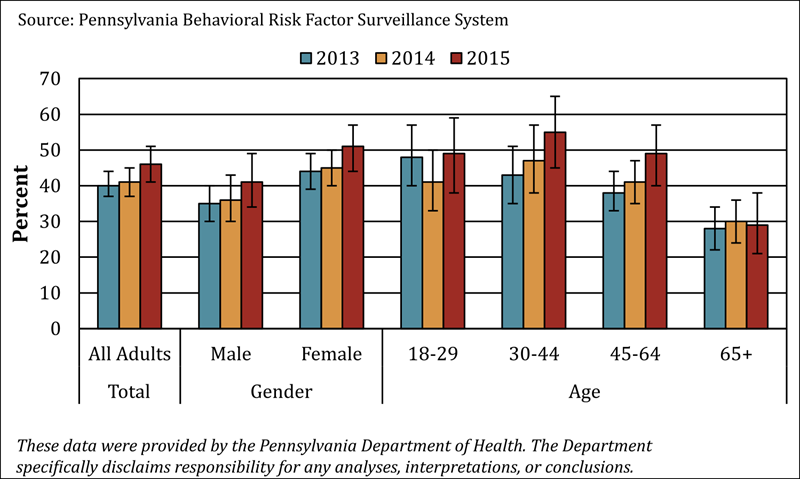
Key Findings: School Youth in Philadelphia
In 2015, 32 percent of high school students in Philadelphia
reported feeling sad or hopeless for at least two weeks over the past year, and 11 percent reported that they attempted suicide in the past year. Females and Hispanic youth were more likely to report poor mental health or a suicide attempt in the past year.
In the 2014 - 2015 and 2015 - 2016 school years, about 75 percent of 3rd - 12th grade students reported feeling a sense of belonging at school and the ability to talk to teachers and staff about problems.
According to survey data collected in spring 2015, 14 percent of Philadelphia high school students reported being bullied on school property in the past year. Female students and non-Hispanic Black and Hispanic students were more likely to report being bullied.
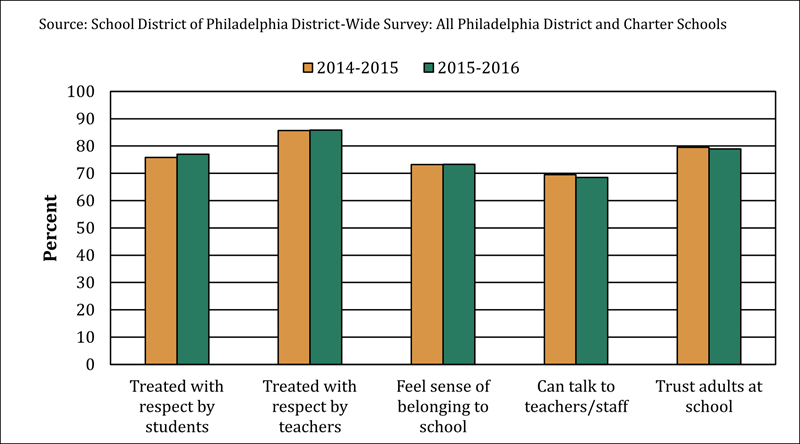
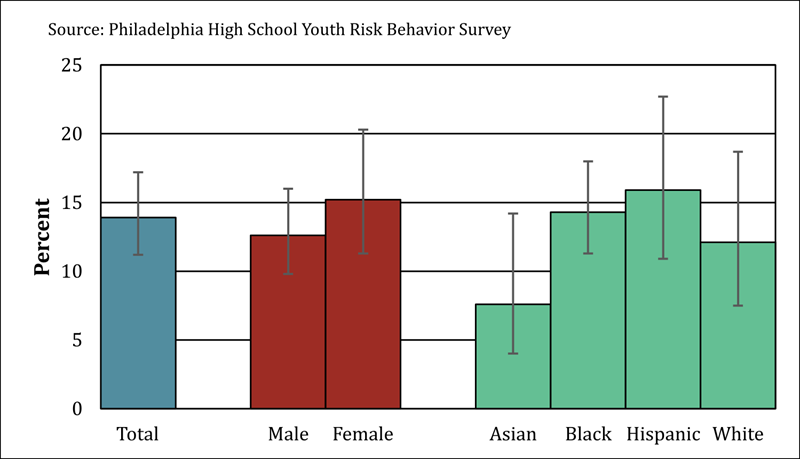
Key Findings: Substance Abuse
“75% of 3rd -12th graders reported feeling a sense of belonging at school.” & “75% reported ability to talk to faculty and staff about problems.
Philadelphia’s drug-induced mortality rate and opioid-related mortality rate have been increasing in recent years as part of the national opioid epidemic. Both types of mortality are highest among non-Hispanic whites compared to other groups. In 2015, the opioid mortality rate was highest in the Lower North, Lower Southwest, North, and West planning districts.
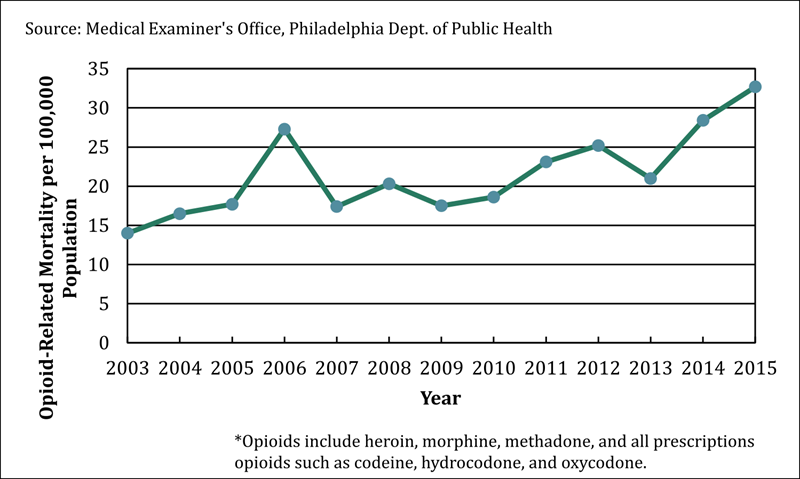
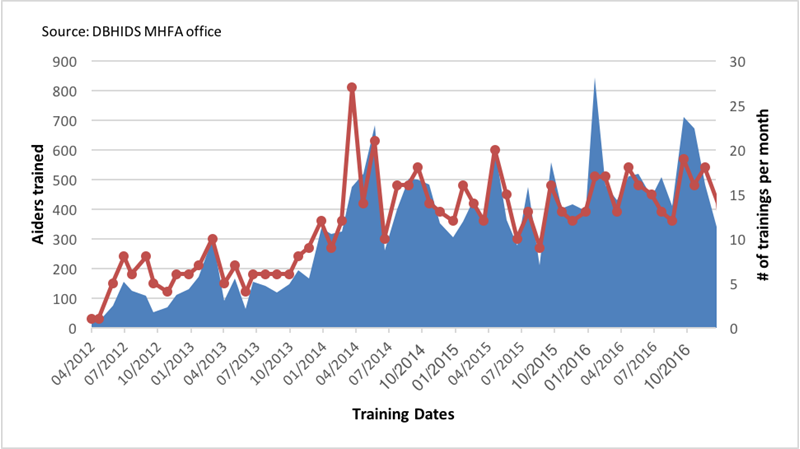
Mortality from opioids increased by over 50% from 2013-2015.” & “By 2015, Philadelphia opioid-related mortality is over 2.5x higher than national rates.
Key Findings: Suicide and Crisis Response Center Use
14,000 calls to suicide prevention hotlines in 2016.” & “10,000 calls were on the local suicide prevention hotline.” & “4,000 calls were on the National Suicide Prevention Lifeline.
In 2014, 10.1 per 100,000 Philadelphians died from suicide. The suicide mortality rate was highest among males and among non-Hispanic whites. Philadelphia’s suicide mortality rate has remained fairly stable between 2009 and 2014, after an increase in 2008 in line with national trends after the national economic recession.
During calendar years 2014 - 2016, 27 - 28 percent of individuals with a crisis response center admission were readmitted within the same year.
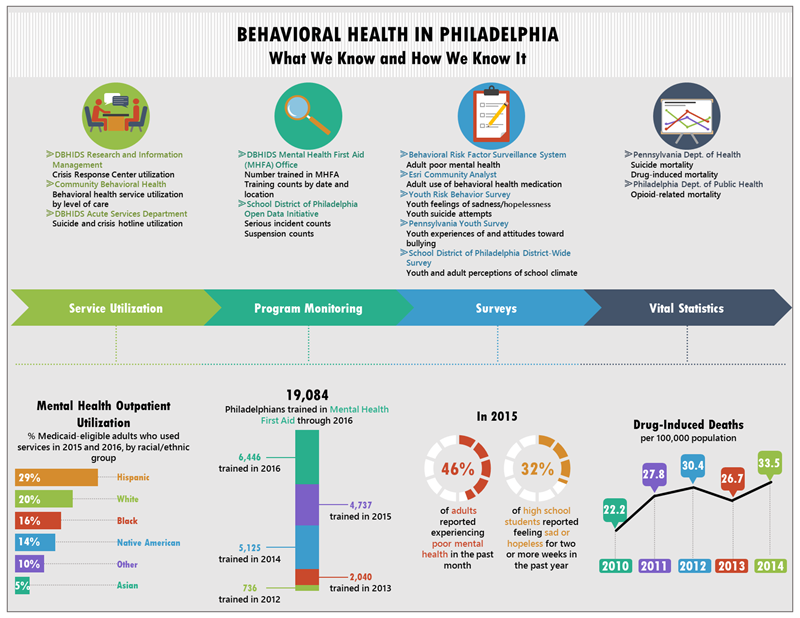
Key Findings: Behavioral Health Services Utilization
According to 2015-2016 city-wide Community Behavioral Health (CBH) utilization data, the largest number of adults using services were females between 21 and 44 years old. Behavioral health service utilization differed by residential zip code.
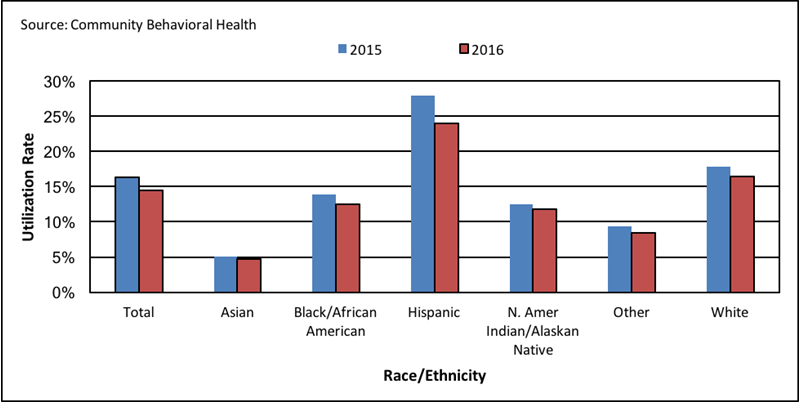

CBH mental health outpatient utilization rates were highest among Hispanics compared to other racial/ethnic groups, for both children and adults. Adult substance abuse outpatient utilization rates were highest among non-Hispanic whites. Child behavioral health rehabilitation service utilization rates were highest among non-Hispanic Blacks.
Key Findings: Mental Health First Aid (MHFA)
By the end of 2016, a total of 19,084 Philadelphians have been trained in MHFA. Most trainings were conducted in zip codes 19102 (Behavioral Health Training and Education Network (BHTEN)), 19136 (Police Academy), and 19123 (Municipal Services Building at the Department of Human Services).
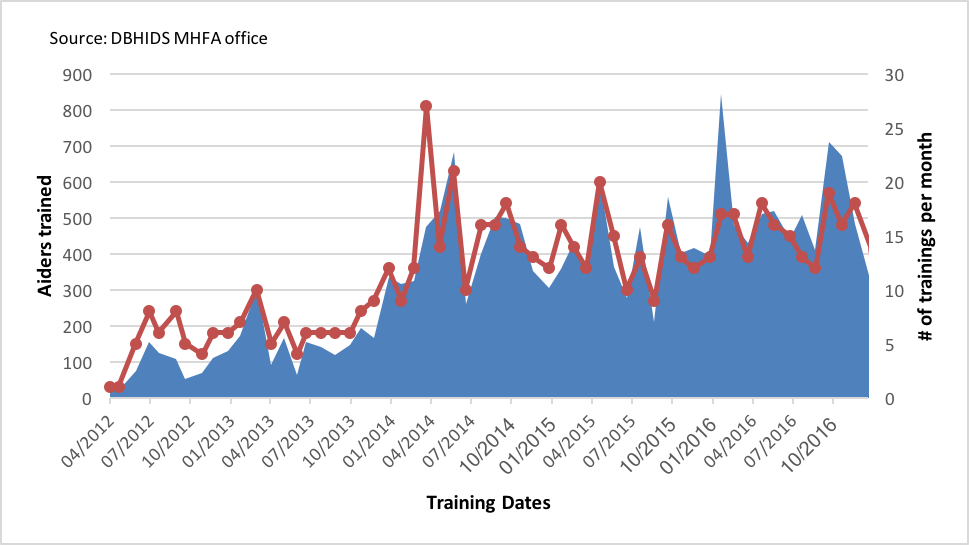
CITATION
Carroll-Scott A, Lê-Scherban F, Kelly MK, Verdecias N, Weckesser S. Current State of Behavioral Health in Philadelphia. Philadelphia, PA: Drexel University Urban Health Collaborative; March 2018